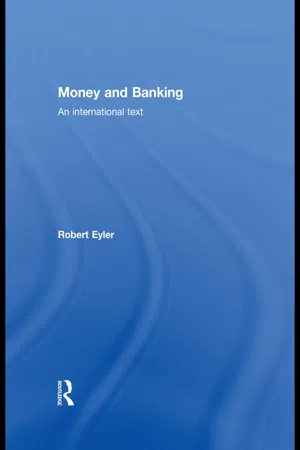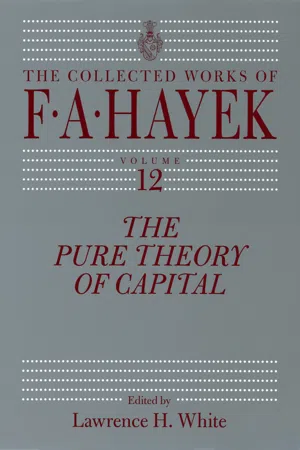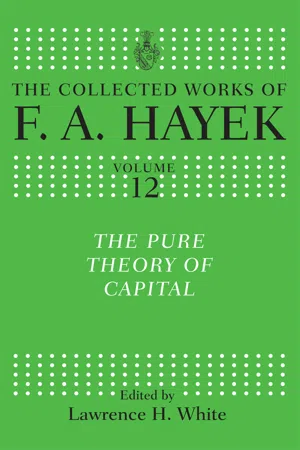Economics
Measuring Interest Rate
Measuring interest rates involves quantifying the cost of borrowing or the return on investment over a specific period. It is typically expressed as a percentage and can be calculated using various methods, such as annual percentage rate (APR) or effective annual rate (EAR). Interest rates play a crucial role in shaping economic decisions and policies.
Written by Perlego with AI-assistance
Related key terms
3 Key excerpts on "Measuring Interest Rate"
- eBook - ePub
Money and Banking
An International Text
- Robert Eyler(Author)
- 2009(Publication Date)
- Routledge(Publisher)
Something we will explore in depth when we talk about money demand later is the idea of the interest rate as the opportunity cost of having cash in your pocket. This relationship between the quantity of cash or liquidity demanded and the interest rate is of key importance to a great deal of macroeconomic theories but also to monetary and fiscal policy in practice. The way consumers react to changes in interest rates paid on their cash holdings changes the demand for goods and services, as well as the demand for lending. However, for now the idea is simple: the interest rate is the opportunity cost of holding money in your wallet rather than in an interest-bearing account or investment.Measure of time preference
It is this definition that links the three above and binds them in the household’s eyes. When you chose to consume more than your income, or consume with credit rather than paying in full, you are making a choice about your time preference to consume. The interest rate is a measure of how people prefer to consume with respect to time: if the interest rate falls, there will be marginal changes in consumption based on a smaller cost of credit. Certain households which initially would save, say $1000, now spend $100 of that $1000 and save only $900. They still save a certain amount, but it is less. The lower interest rate has triggered an incentive for them to spend on credit, or prefer to spend now than later in time.The cost of borrowing falls in the previous example, providing an incentive to borrow. Certain lenders must provide the loan, thus they see the interest rate as the revenue from lending, and want to take advantage of it. Finally, the borrower must demand cash in order to spend, thus the cost of holding money must also be going down at the same time, and intuitively it does. The interest rate is all four of these ideas simultaneously, and must be for financial markets to work correctly. We will see later that the interest rate’s measure of time preference characteristic makes the entire economy work correctly. - eBook - ePub
- F. A. Hayek, Lawrence H. White(Authors)
- 2011(Publication Date)
- University of Chicago Press(Publisher)
an outline of the answers to the main problems. A full discussion of the whole complex of problems involved would require another book of about the same size as this one—even supposing that, in the present state of our knowledge, any such systematic and exhaustive treatment of these as yet imperfectly explored problems could be attempted successfully. As has been explained earlier in this volume, its task is to lay the foundations for the treatment of these problems, not to discuss them in any detail. And we shall confine ourselves in this final Part to the task of showing how these theoretical foundations can be used for the elucidation of certain salient points in the discussion of these more complex problems. We shall not attempt to follow all the possible complications or to explore the consequences of the different possible assumptions with any microscopic accuracy.Use of the Term ‘Rate of Interest’For the purposes of this discussion it will be necessary to alter the terminology used in the earlier Parts of this book. As the traditional terminology which we have followed up to this point clearly creates the danger of some confusion if it is retained in the discussion of monetary problems, it will probably be best if, for the purposes of this final Part, we reserve the term ‘rate of interest’ exclusively for the money rate of interest, that is, the price paid for loans of money, and describe the real rate of return as the rate of profit. 2Relation between the Rate of Profit and the Rate of Interest in EquilibriumOur main problem, then, is to explain how the existence of a system of rates of profit, which in terms of any one commodity will tend to correspond to a uniform time rate,3 will affect the terms on which money will be lent and borrowed. There can be no doubt that the existence of such a rate of profit on investments is the main source of the demand for loans of money, since command over present money is command over present resources which can be turned into future commodities at a profit. And there can also be little doubt that the existence of such a rate of profit is at least one of the reasons why people who might themselves employ the money profitably, will not be willing to lend it without special remuneration, and that therefore the rate of profit will also affect the supply of loanable money funds.4 If the rate of money expenditure always remained constant, so that the money expenditure during any period was always equal to the amount of money spent during the preceding period of equal length, and if consequently we could assume that all the money received during any period would be re-spent, after an (on the average) constant interval, either on consumers’ goods or on some income-bearing assets, it would clearly be justifiable to assume that the rate of interest would be directly determined by the rate of profit.5 - eBook - ePub
- F. A. Hayek, Lawrence H. White, Lawrence H. White(Authors)
- 2019(Publication Date)
- Routledge(Publisher)
Although a full discussion of the monetary problems to which the existence of the ‘real’ rate of interest gives rise lies outside the scope of the present book, it would hardly be appropriate to leave our subject without giving a somewhat more definite indication of how the rate of interest we have been discussing and the money rate of interest are related. At this point we can give no more than an outline of the answers to the main problems. A full discussion of the whole complex of problems involved would require another book of about the same size as this one—even supposing that, in the present state of our knowledge, any such systematic and exhaustive treatment of these as yet imperfectly explored problems could be attempted successfully. As has been explained earlier in this volume, its task is to lay the foundations for the treatment of these problems, not to discuss them in any detail. And we shall confine ourselves in this final Part to the task of showing how these theoretical foundations can be used for the elucidation of certain salient points in the discussion of these more complex problems. We shall not attempt to follow all the possible complications or to explore the consequences of the different possible assumptions with any microscopic accuracy.Use of the Term ‘Rate of Interest’For the purposes of this discussion it will be necessary to alter the terminology used in the earlier Parts of this book. As the traditional terminology which we have followed up to this point clearly creates the danger of some confusion if it is retained in the discussion of monetary problems, it will probably be best if, for the purposes of this final Part, we reserve the term ‘rate of interest’ exclusively for the money rate of interest, that is, the price paid for loans of money, and describe the real rate of return as the rate of profit.2Relation between the Rate of Profit and the Rate of Interest in EquilibriumOur main problem, then, is to explain how the existence of a system of rates of profit, which in terms of any one commodity will tend to correspond to a uniform time rate,3 will affect the terms on which money will be lent and borrowed. There can be no doubt that the existence of such a rate of profit on investments is the main source of the demand for loans of money, since command over present money is command over present resources which can be turned into future commodities at a profit. And there can also be little doubt that the existence of such a rate of profit is at least one of the reasons why people who might themselves employ the money profitably, will not be willing to lend it without special remuneration, and that therefore the rate of profit will also affect the supply of loanable money funds.4 If the rate of money expenditure always remained constant, so that the money expenditure during any period was always equal to the amount of money spent during the preceding period of equal length, and if consequently we could assume that all the money received during any period would be re-spent, after an (on the average) constant interval, either on consumers’ goods or on some income-bearing assets, it would clearly be justifiable to assume that the rate of interest would be directly determined by the rate of profit.5
Index pages curate the most relevant extracts from our library of academic textbooks. They’ve been created using an in-house natural language model (NLM), each adding context and meaning to key research topics.


